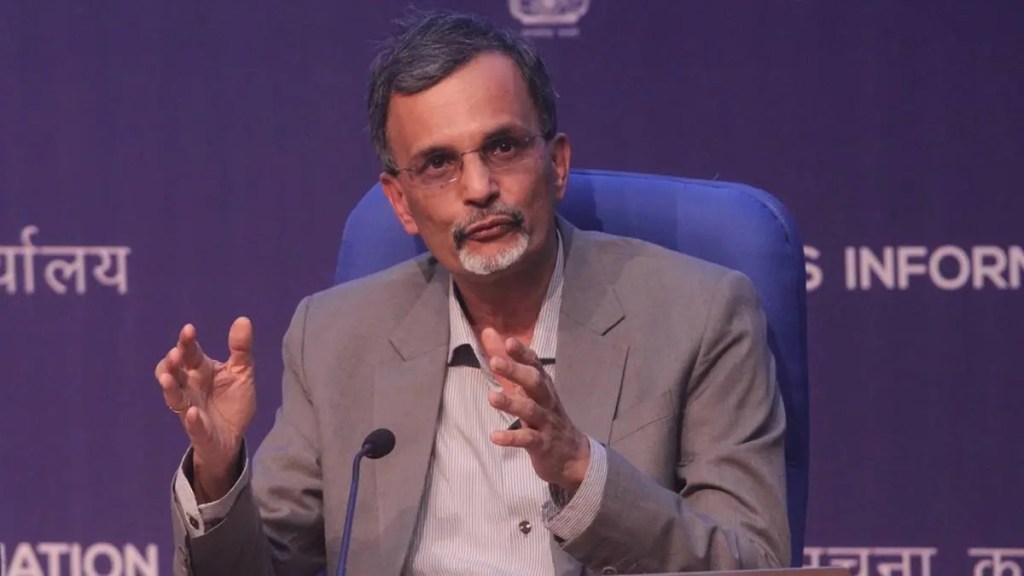At the very outset, in the interim or mini-Economic Survey put out by the Department of Economic Affairs on Monday, January 29th, V Anantha Nageswaran, the chief economic advisor, ministry of finance, shares a telling comment: “It now appears very likely that the Indian economy will achieve a growth rate at or above 7 per cent for FY24, and some predict it will achieve another year of 7 per cent real growth in FY25 as well. If the prognosis for FY25 turns out to be right, that will mark the fourth year post-pandemic that the Indian economy will have grown at or over 7 per cent.”
ALSO READ
Budget 2024 Live Updates: Union Budget 2024 Live Streaming, FM Nirmala Sitharaman Budget 2024 Speech Live
Railway Budget 2024 Live Updates: Indian Rail Budget 2024 Live Streaming
Budget 2024 Income Tax Live Updates: Income Tax Slab Rate Change Budget 2024 Live Updates
Budget 2024 Stocks to Focus: Union Budget 2024 Impact on Share Market Today
How comforting is this confidence and what is so outstanding about the ingredients that will continue to keep up this momentum in times when the global growth is expected to slow and continue to trudge along at just around 2 per cent?
We asked Nageswaran, who typically prefers to stay low profile but in the run up to the budget cannot escape the attention accorded each time to the author of the crucial survey out before the budget. He finds the India growth story standing on, what he calls, the five pillars: 1, The Covid management from the health perspective and the macro-financial aspect is getting far less credit than it deserves; 2, the ability to strike a fine geo-political balance in the last two years after the Ukraine conflict and ensuring energy supplies at affordable prices; 3, our strong banking and corporate sector balance sheets; 4, investments in physical infrastructure; 5, the lagged effect of various structural reforms.
The other telling narrative in the survey is about employment: “The economy has created jobs; the unemployment rate has declined considerably from the peaks during Covid times. The labour force participation rate has increased, especially that of women. Net new subscribers to the Employee Provident Fund (EPF) have steadily risen post Covid, especially among the younger population.’’
So, what about the argument by some economists that while this may be true it is largely on account of rise in employment in two areas: agriculture and in casual labour and therefore far from positive, the narrative is really about a distress going unnoticed. Ask Nageswaran and he says: “That this is distress employment or disguised unemployment is just not borne out by data.” He refers to some of his findings and recent observations which say that driven by northern and central states, youth employment has been rising in the country. According to the Periodic Labour Force Survey (PLFS), the youth (age 15-29 years) unemployment rate has declined from 17.8 per cent in 2017-18 to 10 per cent in 2022-23, while the youth’s labour force participation rate (LFPR) has risen from 38.2 per cent to 44.5 per cent over this period.”
Yes, post covid, reverse migration happened and the agricultural share of employment rose. But then, he says, already in 2021-22, the increase in agricultural employment that happened in 2020 and 2021 began to reverse. “And if you get the data for 2022-23 and 2023-24, we will see that it is continuing, which means the original trend is continuing and was only interrupted by Covid-related reverse migration.”
Also, he argues that “the agricultural employment picking up is mainly because of women entering the labour force and this is not to do with family farm work but about them getting jobs in marketing or downstream related work where they are compensated and this has also been covered in this mini survey.”
All in all, to him a key takeaway that perhaps may be most heartening is that “our growth prospects look good and it looks like we may repeat a growth at 7 per cent for the fourth year as well.”

